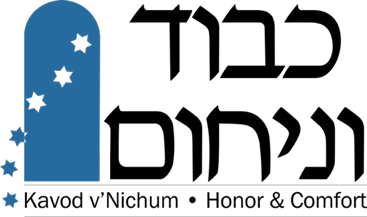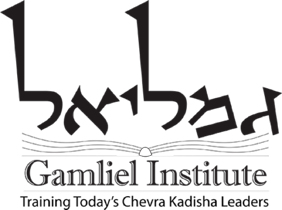FORMING A CHEVRA KADISHA in Los Angeles Session
20 participants–moderated by David Zinner
Multi-community chevra kadisha
Board of Rabbis Funeral Practices Committee
David Zinner:
Flexibility is a must– when you walk in you have no idea what you will find
Resources: for both lay and rabbis
Jewish Funeral Burial and Mourning Website jewish-funerals.org
Provides Orthodox, Conservative, Community Taharah manuals
The first person accounts of doing taharot–which can often be a life-changing experience; the aftermath can put many things into perspectives.
These can be helpful for introducing newcomers to the concept and experience of Taharah
Turn information on the website into a drosh about Chevra Kadisha
Look for parshiot from which one can make a connection to Chevra Kadisha.
Last week’s Haftarah had the Taharah liturgy.
Simchat Torah–death of Moses right to Beresheit….as a text study opportunity–how G-d buries Moses IS the Chevra Kadisha’s parsha
On Yom Kippur–fasting, purification, Book of LIfe, Viddui, we are as angels–this is a great opportunity for inspiring congregations.
How do we help one another, especially at times of grief/death–this is what we should be doing for everyone.
Timely Followup–an organizing meeting—after the drosh on Chevra Kadisha.
Already have date, location, time flyer ready–we really want you to come and participate. “We are going to make this happen” needs to be the mentality.
Who negotiated the funeral plan, who would be practical resources on medical issues, is there anyone who’s been part of a Chevra Kadisha elsewhere, who has organizing skills, who feels spiritually drawn to the mitzvah?
The kavanah is the important element. The first recorded taharah that we know of was the taharah of Jesus.
This is the building of a team–not merely leaders–who in the community are good team players? Team players are the people who respond with “yes” when you ask them to do something. You want people who make this work a priority.
The group can also expand to shmira…you need a larger group than just those who help with the Meit/ah. People who feel that they cannot do taharah might be those who do the phone calls.
The emphasis on forming the group needs to be on the fact that this is very holy work.
There are many models and paths that can be followed.
Two basic types:
Single synagogue chevra–which has the advantage of serving the community.
Community chevra–not serving only one’s own community. Bigger pool of people, builds links with other communities.
Take the shiva meal to the family, ask them to sit and serve them then take the dirty dishes away.
Not just how it affects the person doing the work but the people to whom the Chevra provides service .
How does a Chevra get created?
Sometimes spurred by a death and jump into an action.
Other start with study and never get there.
There is also the middle road model–it’s a multi-dimensional path.
Supply and demand will be unbalanced. The congregation needs to ask for the services of the Chevra, so there needs to be a cultivating of the community. Allowing the community will be beneficial to the entire community.
The biggest thing facing the congregation that wants to start a Chevra Kadisha is the educational issue.
Educational techniques:
There are 7 Jewish funeral homes in LA. Every mortuary in Southern CA offers Jewish services.
4-5 major Jewish cemeteries in LA and other smaller ones.
Chevra Kadisha –Bruce Bloom and his team (Chabad)
SInai Temple has its own Chevra Kadisha as does Young Israel of Century City. Beth Jacob has fallen apart at the present.
Synagogue member do not get paid as individuals but request that they receive donation to Chevra Kadisha. Fund for funerals of the indigent, for education of the Chevra Kadisha members.
Chevra Kadisha traditionally gets together around 7 of Adar, generally with an educational component.
Funeral director needs to put it on pricelist–if there is more that one Chevra Kadisha in town, there may be a dedicated charity. Many do not charge for their members.
Rabbi Goodman’s Plain Pine Box as idea–offer plan as part of synagogue membership.
The body will be washed anyway at the funeral home–so why not have Jews do this in the traditional Jewish way?
The middle age–baby boomer/ post baby boomer groups will make connections and feel loyalty to one another. Offering funerals as a benefit of membership. Then suggesting that the family contribute to the funeral fund to help out other families and those less fortunate. Contributing to the funeral fund is tax deductible.
All Jewish funeral homes in LA will provide infant burials at no charge.
Greater LA Board of Rabbis Funeral Practices Committee:
Members are representatives of self-identified Jewish mortuaries and cemeteries. The major cemeteries are members. There is no consensus as to what is a Jewish cemetery or mortuary.
Rabbis of various denominations are also members. The mortuaries and cemeteries take turns caring for indigent burials.
Free burial fund with cooperation of JFS. Funeral Practices Guide. There is a Brit for funeral officiants and mortuaries and cemeteries–what should each side expect? Issues of a common honorarium. Suggested honorium for clergy officiating at non-member funerals $500 (rabbis, cantors, chaplains). This amount is not universally observed.
15% of all Jews across the board currently get taharah.
There is also a 20% decrease in Jewish funerals.
The taharah itself is the same across all denominations.
The main difference between Orthodox and non-Orthodox Taharot is the people doing them.
Two kinds of community–those who are connected and those who are not.
Very low identification and affiliation rate in LA–any attempt to start a Chevra Kadisha needs to be connected to a community education project.
Community Education falls in the purview of the Funeral Practices committee–promoting Jewish burial, Jewish mourning.
Cultural and secular Jews don’t want to hear that Chevra Kadisha is traditional–instead, midwifing souls, providing a caring community.
What does one do about intermarried families?
What are the needs that participants are identifying?
Information about serving intermarried families.
Parents of congregants are also a critical piece.
Study materials to be used about death to be taught to congregants.
Sample sermons.
A list of different liberals traditions that are involved–what liberal traditions could be.
Participating in a Taharah–no one is an observer.
How to build a coalition of several temple groups.
Different ways to frame the concept of Taharah and examples.
Community day of study about Taharah.
Not necessary to have mortuaries ask “are you Orthodox” when a person asks for Taharah.
Networking with LGBT synagogues so that there is a Chevra Kadisha in the LGBT community.
Better outreach between the Jewish Home, Skirball Hospice, the congregation. (Temple Israel of Hollywood as an outreach partner for Skirball Hospice).
Congregational rabbis need to take ownership of educating families.
Training opportunities –a one hour, half day, full day and weekend training for prospective Chevra Kadisha members.
Hospice needs to creat materials for families.
Where to get training and resources.
Want a better sense of what supplies, access to cemeteries.
Clusters of synagogues in nearby areas might join together for education and training.
Training immediately available–a complete Shabbaton is possible. Webcast adult ed, phone consultation, etc.
Most training is OJT. Look at manuals and choose what seems best for your community.
Throughout the American West there are institutions that have been around for a hundred years or so.
Consider involving medical people, people who have hands-on experience. Best thing to do is set a start date so that there is a goal to meet. The cost is negligible.
The key to success is to have opportunities to put into practice what people have learned–how to keep the level of knowledge, interest and motivation up.

